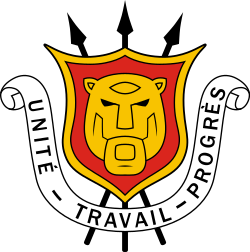 |
|---|
The president of Burundi is the head of state and head of government of the Republic of Burundi. The president is also commander-in-chief of the National Defence Force. The office of the presidency was established when Michel Micombero declared Burundi a republic on 28 November 1966. [1] The first constitution to specify the powers and duties of the president was the constitution of 1974, which was adopted in 1976. [2] Written by Micombero, the constitution affirmed his position as the first president of Burundi. [3] The powers of the president derive from the latest constitution, implemented in 2005 as a result of the 2000 Arusha Accords after the Burundian Civil War. [2]
Contents
Nine people have served in the office since Burundi became a republic. Only one president, Pierre Buyoya, has served on two non-consecutive occasions. [4] Sylvie Kinigi was the first and only woman who has served in the role (on an interim basis). [5] The current president, Évariste Ndayishimiye, has been serving in the role since 18 June 2020.











